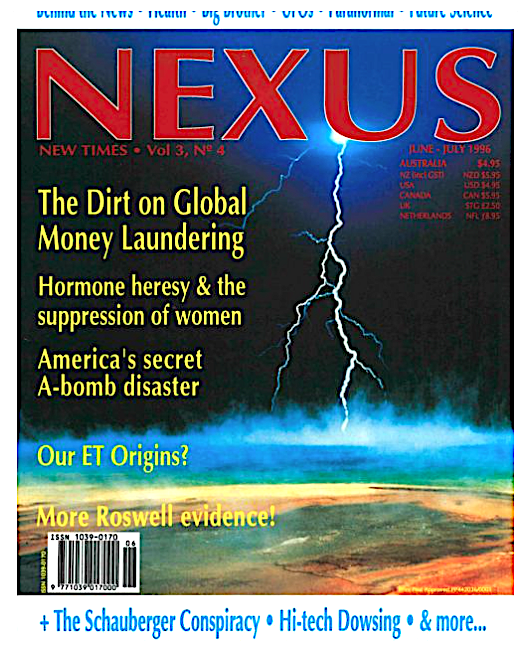Unfortunately, at this time the 1944 movie version of the Port Chicago Explosion remains lost. Below are the two known references to it by its discoverer, Peter Vogel:

Go to the above time time of the below .mp3:
Vogel mentions the movie in a back issue of Nexus Magazine, one of the files he apparently bequeathed to Posterity in his Research Archive.
THE FILM
The Navy has a film record of the disaster at its Concord Naval Weapons Station. After being challenged, the Navy claimed this was a Hollywood simulation of a miniature explosion. The film shows a typical nuclear explosion, which would have been hard to simulate. According the the Navy, the film was created to support their argument to the US Congress sometime in the 1960s that the remains of the the town of Port Chicago be purchased by the Navy and incorporated into the Concord Naval Weapons Station as a buffer zone in the event of another large explosion.
Significantly, the Navy did not claim the film was a re-creation until after it was suggested that the film could be the record of a nuclear detonation. However, Dan Tikalsky, public affairs chief at Concord, told Peter Vogel, writing for The Black Scholar magazine, that the film was a nitrate-base film, which would require the film to have been produced prior to 1950 when nitrate-base film was replaced with non-explosive cellulose-base film.
Peter Vogel wrote in the Spring 1982 edition of The Black Scholar:
“Based on viewing an edited video copy of that film which was made available to me, I have concluded that the film records, in every detail, the progression of the actual explosion of July 17, 1944 at Port Chicago. For example, early frames of the film suggest a record of the expansion of the Wilson condensation cloud during which the formation of the ball of fire is obscured. Furthermore, the movements exhibited by several large, independent fragments of the explosion over time compared to the speed of the explosion itself are evidence of the very large distances those fragments travelled during the course of the film sequence.
“It is obvious, of course, that only an intentional film record of the blast could have been made since the probability of having, by chance, a motion picture camera rolling and pointed in the right direction at the right time at night is exceedingly remote.
“If the explosion was filmed at the Port Chicago site, it would follow that the explosion was planned and anticipated.”

